All plasma cutting systems use gas, but you will have to choose a proper plasma gas for the best results with the given material. Depending on the metal you’re cutting, you’ll require different types of gases or a particular combination.
Since most plasma system manuals tend to overwhelm the operator with a confusing array of cut charts and gas choices, we will try to make it simple for you.
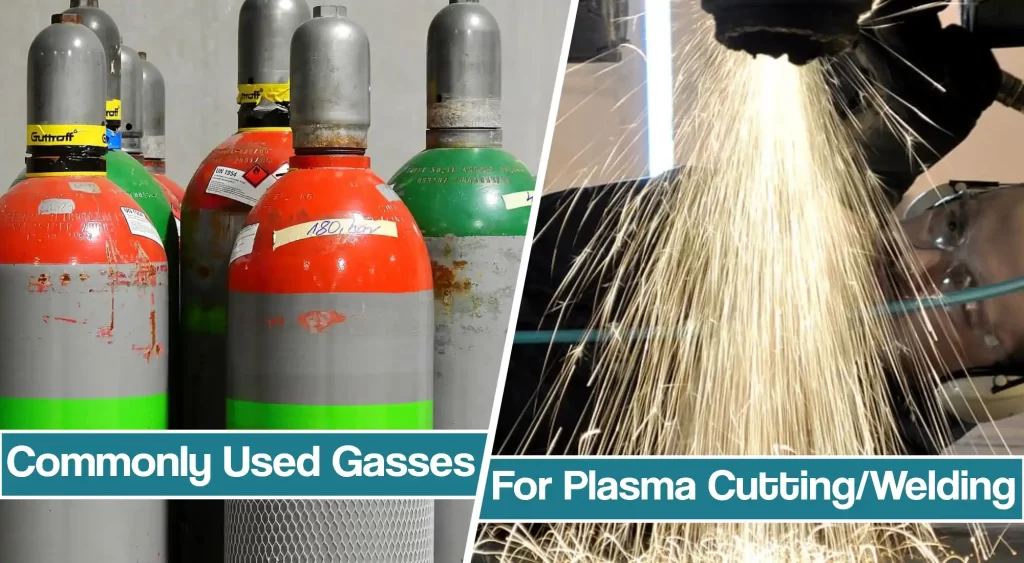
This article will discuss gases used in plasma cutting and explain how they affect cutting speed, performance, and final results with different metal types and thicknesses.
Most Common Plasma Cutting Gases
A plasma welding machine uses different kinds of gases to rip through metals. The plasma cutter gas transmits an electric arc that splits open a thick metal piece.
Compressed air, nitrogen, argon, hydrogen, and oxygen, blends of two or three components, are the most popular plasma gases for plasma cutting. Most commonly, plasma cutting gases conform to three main categories:
- Control Fuel: Firstly, you should know that plasma cutting requires an ideal environment to work well. Control fuel leads to the plasma head and regulates the heat around the torch protection nozzle. This configuration ensures that the cut flame only ignites only after the correct setting of the plasma head.
- Plasma Cutter Fuel. Plasma cutter fuels are standard at primary and high-end models involving different heating levels. The first stage occurs during the ignition is weak, then more power flows during the cutting stage. Several gases are involved in these two stages.
- Swirl Fuel. During the plasma cutting process, materials tend to bend or wrap due to intense heat, making cutting less accurate. To prevent these deformities and imperfections, fabricators use swirl fuel.
Let’s explain how each type affects the plasma cutting operations and the plasma system’s capability on various metals.
Compressed air
Air is the most versatile plasma gas and lowers the cost of operation because it is not necessary to purchase gases. Compressed air works relatively well for materials up to one-half inch at a meager price. However, you will need to provide a good-sized, dedicated air compressor, a refrigerated dryer, and a bank of filters to take out particulate, oil mist, and any remaining moisture.
Nonetheless, some plasma cutters have built-in air plasma systems, but you will still need to remove particulate, oil mist, and moisture contamination.
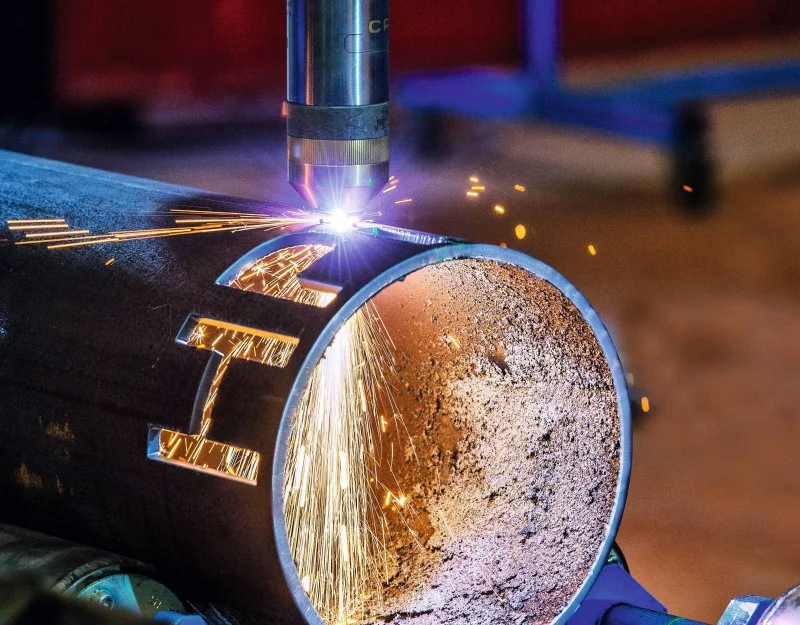
When talking about performance, you should know that air produces good cut quality and speed on aluminum, mild and stainless steel.
Due to economics and decent performance, the air is a good option for many shops. However, keep in mind that some nitriding and oxidation can occur on the cut surface. This problem, later on, can cause porosity in welds, but you can surpass it by using good-quality weld wire with denitrifiers and deoxidizers.
Remember that air shield gas is the best choice when using air plasma.
Oxygen Plasma Cutting Gas
Oxygen is the industry standard choice when dealing with mild steel because it provides the best, clean-cut quality and fastest cutting speed of any plasma gas. However, plasma cutting aluminum plate or stainless plate with oxygen is not recommended due to possible oxidation and contamination.
Oxygen plasma gas reacts with carbon steel to produce a more delicate molten metal spray. Thus each droplet has lower surface tension. As a result, this molten spray is more easily ejected from the kerf.
The most significant drawbacks are the oxygen plasma gas costs and high ware of the consumable parts. However, increased consumables and gas prices are usually offset by decreased expenses on secondary operations such as dross removal and straightening beveled pieces.
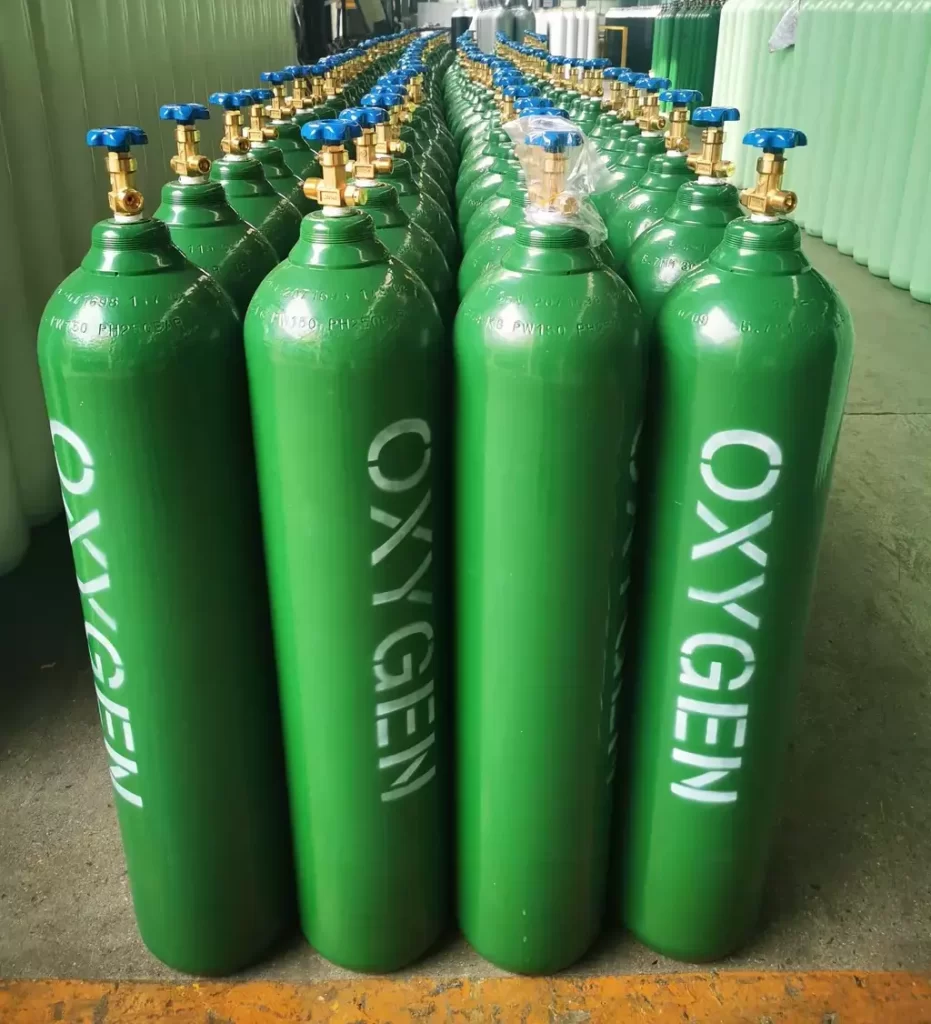
In addition, some state-of-the-art oxygen plasma systems use inert gas with oxygen plasma. This combination increases parts life, which is now similar to nitrogen or air systems.
Keep in mind that air shield gas is typically used with oxygen plasma.
Nitrogen plasma cutter gas
Nitrogen was one of the most used plasma cutter gases in early plasma torch designs, but it still might be the best choice when cutting stainless steel and aluminum. Overall, with nitrogen as plasma gas, the cut quality and consumable life are excellent.
The air is the best secondary gas when using nitrogen plasma, but you can also opt for CO2 or water. Carbon dioxide works well by slightly improving surface finish, cutting speed, and parts life over the air, but CO2 costs more than air. In addition, to deliver adequate flow, multiple manifold gas cylinders or a bulk system is required.
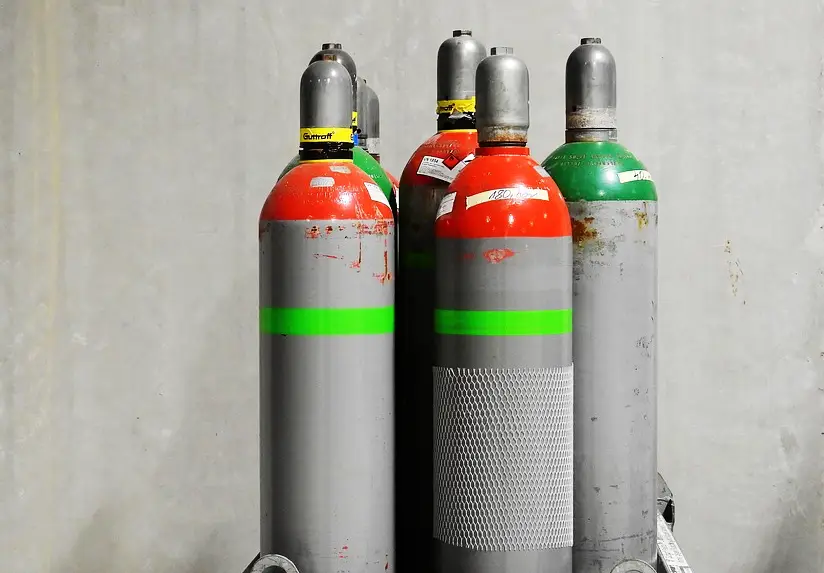
Meanwhile, water creates a very smooth, shiny cut surface when cutting aluminum or stainless steel. However, the plasma system should be capable of sustaining water.
The most significant disadvantage of nitrogen plasma gas is the cutting capability. When cutting thicker metals, usually over 1/2 inches, the argon/hydrogen gas mixture can utilize the full potential of your plasma machine.
Argon hydrogen gas
A mixture of 35% hydrogen and 65% argon is often referred to as H-35. Argon hydrogen mixture is the hottest burning plasma gas as it provides the maximum cutting capability.
That’s why this mixture is widely used when cutting thick stainless steel and aluminum, most often thicker than 1/2″. As the hottest plasma burning gas, argon hydrogen can be used in water injection torches up to 1000 amps for cutting up to 6″ stainless steel.
H-35 provides a straight cut and a very smooth, almost polished surface on stainless steel in multi-gas torches, but some dross may occur along the bottom edge.
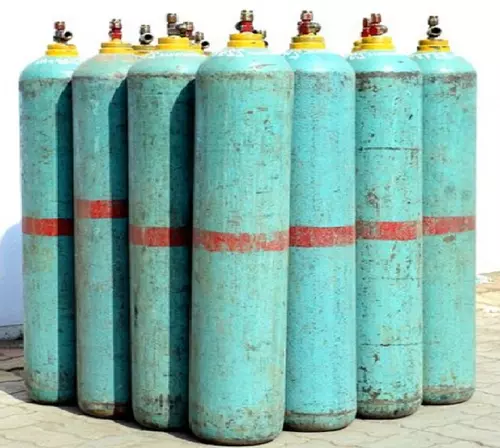
Argon hydrogen typically uses nitrogen as the shield gas, but this combination is costly.
Tips on Choosing the Right Plasma Cutting Gas
The answer to the question of what is the best plasma cutting gas should be based on cut quality, productivity, and economy. In addition, the choice may vary on the type and thickness of the metal you are cutting.
Here are some tips on picking the different gases for each application:
- For example, when cutting mild steel, an oxygen plasma gas with air shield gas ensures the best, clean-cut quality, lowest dross levels, minimal rework, excellent weldability, and highest cutting speed/productivity.
- Cutting stainless and aluminum thinner than 1/2″ will result in a good balance of cut quality and affordability with nitrogen plasma gas. However, CO2 as the secondary gas increases cutting speed, and If your system allows, a water shield will provide the best edge quality.
- Suppose your plasma system is equipped for safe operation with high-intensity plasma flame. In that case, you should choose argon hydrogen with nitrogen as secondary gas nitrogen to cut stainless steel and aluminum of more significant thickness (>1/2″).
- For the most economical aluminum, mild steel, and stainless steel cutting, clean, dry shop air is the best choice.
Straightforward Gas Selection Table
| Plasma Gas | Shielding Gas | Mild Steel | Stainless Steel | Aluminum |
|---|---|---|---|---|
| Air | Air | Decent Cut Quality, Economical choice | Good Cut Quality, Good Speed, Economical Chocie | Good Cut Quality, Good Speed Economical Choice |
| Oxygen | Air | Excellent Cut Quality, Excellent Speed Little to no Dross | Not Recommended | Not Recommended |
| Nitrogen | CO2 | Fair Cut Quality, Some Dross, Excellent Parts Life | Good cut Quality Excellent parts life | Excellent Cut Quality, Excellent Parts Life |
| Nitrogen | Air | Fair Cut Quality, Some Dross, Excellent Parts Life | Good cut Quality Excellent parts life | Good cut Quality Excellent parts life |
| Nitrogen | Water | Fair Cut Quality, Some Dross, Excellent Parts Life | Excellent Cut Quality, Excellent Parts life | Excellent Cut Quality, Excellent Parts Life |
| Argon/Hydrogen | Nitrogen | Not Recommended | Excellent on thicker than 1/2 | Excellent on thicker than 1/2 |
Resources
- https://www.hypertherm.com/learn/articles/guide-to-plasma-gas-selection/
- https://primeweld.com/blogs/news/how-to-choose-right-plasma-cutter-gas-type
- https://www.lindedirect.com/about-us/frequently-asked-questions/gas-information/what-gases-are-used-for-plasma-cutting
- https://www.westermans.com/blog/top-4-plasma-cutter-gases/





